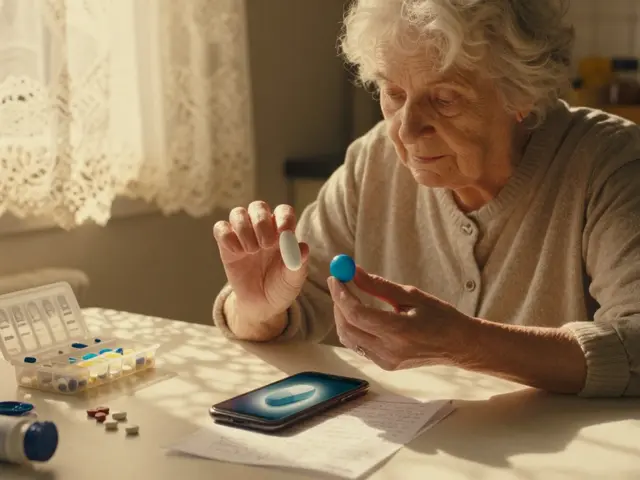COPD treatment: practical steps to breathe better
COPD is the third leading cause of death worldwide, so treating it well changes quality of life. The main goals are to reduce symptoms, prevent flare-ups, improve exercise ability, and slow decline in lung function. Treatment mixes medicines, rehab, device care, and common-sense lifestyle moves.
Quit smoking now if you still smoke — nothing helps more. Vaccines for flu and pneumonia cut hospital visits. Aim for a yearly flu shot and follow your doctor’s schedule for pneumococcal vaccines.
Inhalers are the backbone of COPD care. Short-acting bronchodilators like albuterol help quickly during breathless moments. Long-acting bronchodilators (LABA and LAMA) control daily symptoms and reduce exacerbations when used regularly. Some patients need a combination inhaler (LABA+LAMA or LABA+ICS) — your doctor will choose based on symptoms, exacerbation history, and blood eosinophils.
Learn proper inhaler technique and clean devices. Using a spacer for a metered-dose inhaler improves delivery. If you still feel short of breath, ask for a medication review — wrong device or poor technique is a common fix.
Preventing and handling flare-ups
Recognize a flare-up: worsening cough, more sputum, change in sputum color, fever, or rising breathlessness. Early treatment matters. Mild flares may need increased bronchodilators; many doctors prescribe a short steroid course and, when bacterial infection is likely, antibiotics. Have a written action plan so you know when to call your clinic or go to the ER.
Pulmonary rehab is highly effective. It combines supervised exercise, breathing training (like pursed‑lip breathing), education, and support. Rehab improves stamina and cuts future hospital stays. Ask about local programs or home-based rehab if transport is an issue.
Advanced options and daily life tips
Oxygen therapy helps people with low blood oxygen at rest. Long-term oxygen can improve survival and sleep. Noninvasive ventilation (CPAP or BiPAP) helps during severe exacerbations or chronic respiratory failure. Other drugs, like roflumilast, can reduce flare-ups for chronic bronchitis with frequent exacerbations. Some patients benefit from macrolide antibiotics taken long-term to reduce infections, but these have side effects and need close follow-up.
Stay active, eat well, and manage weight — both low and high weight can worsen outcomes. Treat anxiety and depression; they make breathlessness feel worse. Check for heart disease, sleep apnea, and osteoporosis — treating these helps your lungs.
Talk to your clinician about advance care preferences and a rescue plan. Keep a medication list, track symptoms with a simple diary or app, and review treatment every year. With the right steps you can cut flare-ups, stay out of hospital, and feel better day to day.
Simple checks help monitor progress: get spirometry at diagnosis and yearly or when symptoms change, and ask for a COPD Assessment Test (CAT) to track how symptoms affect daily life. Avoid indoor pollutants like secondhand smoke, strong cleaning chemicals, and wood smoke. If you travel, carry your inhaler, a copy of prescriptions, and a short action note for local doctors. Finally, ask about clinical trials or new treatments if standard care leaves you breathless — options change fast and you might qualify. Ask questions every visit.

How Budesonide Formoterol Affects Sleep Quality
Budesonide formoterol can improve or disrupt sleep depending on timing and dosage. Learn how this common asthma and COPD medication affects nighttime rest and what you can do to sleep better.
Read More
2025's Symbicort Alternatives: What's Out There?
In 2025, new medications provide options for those seeking alternatives to Symbicort. This article explores these options, discussing their effectiveness, convenience, and potential downsides. It's a must-read for anyone managing asthma or COPD, offering insights into the latest in respiratory care. Discover what might work best for you.
Read More




